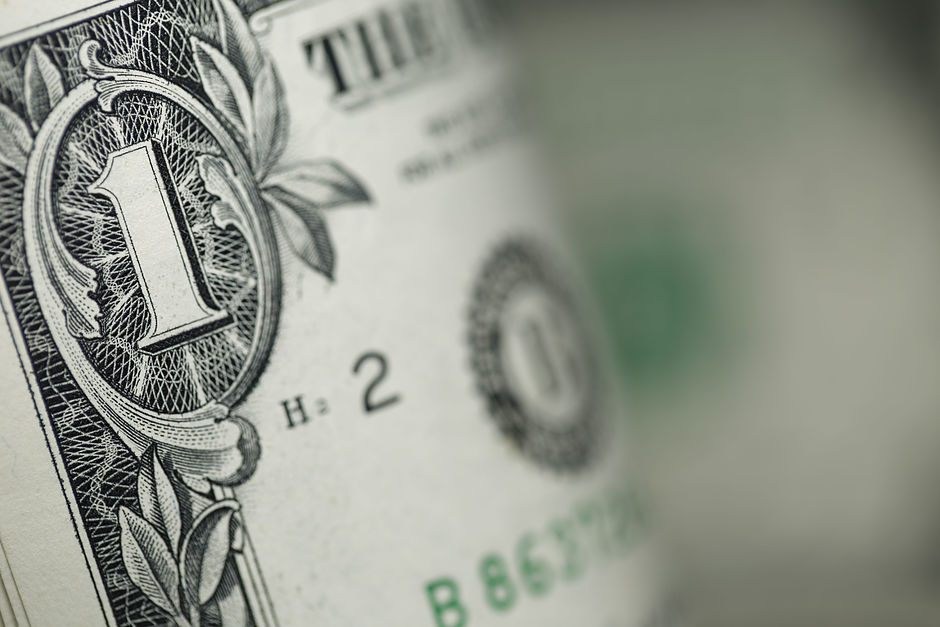The petrodollar is dead and that's a big deal

The petrodollar quietly died this week.
While it didn't get big headlines, the demise of the petrodollar could mean big trouble for a U.S. government that depends on dollar dominance to support its borrowing and spending.
"Petrodollar" refers to the dollar's role in crude oil transactions.
In the wake of the 1973 oil crisis, Saudi Arabia agreed to conduct all oil transactions in dollars and invest its oil surplus funds in U.S. Treasuries in exchange for U.S. military support.
The agreement was a boon for the dollar and was key in cementing the greenback as the world reserve currency. Due to Saudi Arabia's prominent role in the global oil trade, the agreement had a far-reaching effect. As a result, virtually all of the world's global oil transactions were priced in dollars.
This ensured a constant demand for dollars. Every country needed them to buy oil. This demand for dollars supported the U.S. government's “borrow and spend” policies, along with its massive deficits. As long as the world needed dollars for oil, it guaranteed demand for the greenback. That meant the Federal Reserve could print more dollars and issue more Treasuries than it could have otherwise. As an article published by Nasdaq.com reported, the agreement created a "captive market" for U.S. government debt.
ZeroHedge explained how the process works:
One of the core staples of the past 50 years, and an anchor propping up the dollar’s reserve status, was a global financial system based on the petrodollar – this was a world in which oil producers would sell their product to the U.S. (and the rest of the world) for dollars, which they would then recycle the proceeds in dollar-denominated assets and while investing in dollar-denominated markets, explicitly prop up the USD as the world reserve currency, and in the process backstop the standing of the US as the world’s undisputed financial superpower.”
On June 9, the agreement expired, and it doesn't appear it will be renewed. This opens the door for the Saudis to sell oil in currencies other than the dollar.
The end of the agreement doesn't mean Saudi Arabia will stop accepting dollars for oil, and there are plenty of other influential players in the mix that will likely continue to rely on the greenback. But the expiration of the agreement opens the door for oil sales in other currencies, including the Chinese yuan. And if the Saudis move away from the dollar, other countries will likely follow suit.
According to Russia's Sputnik news service, “Nearly 80 percent of global oil sales are priced in dollars. However, Russia, Iran, Saudi Arabia, China, and others are increasingly shifting to local currencies in energy trade. In 2023, 20 percent of global oil was bought in other currencies, as per the Wall Street Journal.”
China has been pushing Saudi Arabia to accept yuan for oil, and the Saudi government has reportedly expressed openness to the idea. Saudia Arabia's membership in the BRICS bloc this year will likely strengthen the two countries' economic ties.
BRICS is an economic cooperation bloc originally made up of Brazil, Russia, India, China, and South Africa. As of Jan. 1, 2024, the bloc expanded to include Saudi Arabia, Egypt, the UAE, Iran, and Ethiopia. More than 40 other nations have expressed interest in BRICS membership.
The expanded BRICS has a combined population of about 3.5 billion people. The economies of the BRICS nations are worth over $28.5 trillion and make up roughly 28 percent of the global economy. BRICS nations also account for about 42 percent of global crude oil output.
The petrodollar was getting ragged before the expiration of the Saudi-U.S. agreement. Late last summer, the UAE settled an oil trade without converting local currencies to dollars for the first time when India's top refiner paid for crude in rupees. India has also bought oil from Russia without using dollars. India ranks as the world's third-largest oil importer.
As India Today reported, "This move by Saudi Arabia marks the beginning of a major shift in global economic dynamics, though its full implications on international trade and finance remain to be seen."
Potential ramifications of the petrodollar's demise
The end of the petrodollar could accelerate global de-dollarization and that would be a disaster for the U.S. economy.
While the current de-dollarization trend doesn’t directly threaten the dollar’s role as the world reserve currency — yet — it could foreshadow bigger problems down the road, especially if it accelerates.
The dollar is already on shaky ground. Many countries are looking for ways to minimize dependence on the greenback due to growing concerns over America's use of the dollar as a foreign policy weapon.
After the Russian invasion of Ukraine, IMF Managing Director Gita Gopinath warned that sanctions on Russia could erode the dollar’s dominance by encouraging smaller trading blocs using other currencies. That’s exactly what we’re seeing.
Without the petrodollar supporting the greenback, we could see more rapid de-dollarization.
Even those who minimize any threat to the dollar's status as the global reserve currency concede the expiration of the petrodollar agreement could weaken the dollar over the long term. That would spill over into U.S. financial markets, particularly the bond market. It would also lead to more price inflation for American consumers.
Sputnik explained it this way:
“If world players significantly reduce the use of U.S. dollars, the U.S.'s ability to issue dollar debt and earn dollars for exports will diminish and the nation's economy will shrink, according to international economists.”
In effect, if other nations no longer need dollars to conduct trade, the demand for dollars could plunge significantly. That would create a dollar glut and a rapid devaluation of the greenback. Interest rates on US Treasury bonds would soar. This would be an untenable situation for a government servicing more than $34.5 trillion in debt.
Modest interest rate hikes by the Federal Reserve have already driven interest payments sky-high. The U.S. government now spends more on servicing the debt than it does on national defense or Medicare.
In a nutshell, you should be wary of counting on global petrodollar dominance to prop up the U.S. house of cards economy.
To receive free commentary and analysis on the gold and silver markets, click here to be added to the Money Metals news service.
Author

Mike Maharrey
Money Metals Exchange
Mike Maharrey is a journalist and market analyst for MoneyMetals.com with over a decade of experience in precious metals. He holds a BS in accounting from the University of Kentucky and a BA in journalism from the University of South Florida.

















